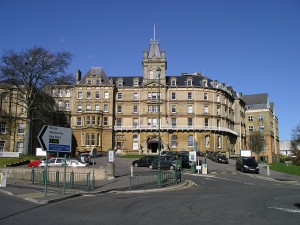I was invited and attended the Solace Annual Summit 2015 from 7 to 9 October. I enjoyed the conference sessions very much as well as the beautiful seaside scenery of Bournemouth.
Firstly, I was impressed that the UK chief executives are so professional and independent, in having formed the organisation voluntarily and holding events by themselves for themselves and being eager to improve their various skills all the time. We do not have posts like the UK chief executives in Japanese local authorities and senior officials there do not coordinate an organisation like Solace on their own. I thought this might be partly because UK chief executives consider themselves as management specialists with skills and experience different from others, who change their workplace beyond demand within organisations, sometimes even beyond the boundary between the public sector and private sector, whereas in Japan even the most senior officials are not necessarily considered as management specialists. We do not have this executives’ mobility in Japanese local authorities either. I thought Japanese civil servants could be more professional in terms of self-improvement so that they can contribute more to their communities.
Secondly, I noticed the great expectation and some serious concern about the devolution deals and the business rate reform among the chief executives. It reminded me of the same atmosphere we had in Japan just before the transfer of tax resources from the national government to the local governments. I hoped that UK local authorities can make the most of these opportunities and have good results for both the national government and the local authorities, needless to say for their residents.
Japanese local authorities experienced local financial reform from 2004 to 2006, by which, put simply, about 3 trillion yen (£16.6bn) of national income tax revenue was transferred to local inhabitants tax, in exchange of reducing about 4.7 trillion yen (£26.1bn) of direct national treasury disbursements (subsidies and obligatory sharing to local authorities). Among the 4.7 trillion yen national disbursements, about 790 billion yen was converted to grants with fewer restrictions laid out by central government, and at about that time 790 billion yen in reality were also cut.
From perspective of local authorities, the transfer of 3 trillion yen of tax revenue source was of course a big achievement, but they were not as happy as expected with the results, as there was not much increase in the degree of freedom to form and execute policies at will. The reduction of the national treasury disbursements was anyway almost all made through abolishing those local authorities’ compulsory or obligatory payments.
(Just for your reference, the reform was a package of three reforms for different areas; the transference of tax revenue sources from the national government to the local governments, the reform of national treasury disbursements, and the reform of local allocation tax. The reform of allocation tax, which I didn’t mention above, had a considerable impact on local authority finance in Japan at the time. If you are interested please see http://www.clair.or.jp/j/forum/honyaku/hikaku/pdf/up-to-date_en2.pdf )
In the course of the reform, Japanese local authorities had to form unified opinions together so that they were able to discuss and negotiate effectively with the national government. It was a big challenge for them as local authorities were did not always have the same interests (different policy preferences), financial situations, and different business concentration in the area, geographical factors, and so on.
Kazuya Shima, Director of Japan Local Government Centre, London.
JLGC would like to express its gratitude for the kindness and hospitality Director Shima enjoyed at the Solace Summit. Picture used via Creative Commons Attribution-Share Alike 3.0: Wikimedia, photo by Graffity, 2014


